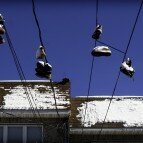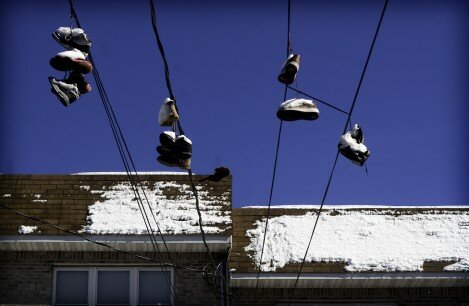
 Her name is Gladys. She lives in Hunts Point on Manida Street, in the Bronx. She is a senior in high school, and preparing to go to college. She wants to study culinary arts: She’s not sure why, other than the fact that she’s always loved watching her mother cook, and has a curiosity about the discipline.
Her name is Gladys. She lives in Hunts Point on Manida Street, in the Bronx. She is a senior in high school, and preparing to go to college. She wants to study culinary arts: She’s not sure why, other than the fact that she’s always loved watching her mother cook, and has a curiosity about the discipline.
The kitchen that Gladys watches her mother cook in is not one that anyone should have to eat from. I don’t mean this to sound judgmental or elitist, and I’m not airing my views about personal hygiene and food choices. There is mold eating away from most parts of the ceiling, roaches living in the cesspools of water collected from the leaking sink, rust and rot deteriorating the pipes and a fly strip boasting lots of recently conquered victims. I subconsciously felt myself holding my breath.
The state of affairs inside Gladys’s 2-bedroom apartment (which at one point was housing her mother, her six siblings and herself) is not uncommon amongst the units at 626 Manida St. These decrepit buildings are sadly home to a number of families in Hunts Point. As Manhattan-ers we often think that dire poverty and inhumane conditions of this proportion only exist in third world countries. So I’d like to introduce the Manida Street buildings as the newest third world country, a whopping 45 min Subway ride away. Like our dear friends at Hunts Point Alliance for Children (HPAC) have done, we should put this place on our collective radar, for a while.
My story about Gladys is not a downer. Gladys is, without a doubt, one of the most optimistic, positive, energized individuals I have encountered in recent time. Her radiance and enthusiasm beamed throughout that apartment, creating the illusion that they actually had proper lighting. Her dedication to school and learning astounded me, and nearly made me wish I was 18 again (which doesn’t often happen). She has a brightness her that spills out of her, and I can’t figure out where amongst her caving in ceiling and broken-window bedroom she found it.
I was on a photo assignment for HPAC, charged with showing the true living conditions that so many of their residents and beneficiaries face daily. I admit, I felt a bit embarrassed by the whole situation: Going into strangers’ homes asking to not only see, but document, their personal living spaces. I felt that by just being there I was implying that there was something wrong with the way the lived. And I guess I was – there’s a lot wrong with the way they live. The distinction is that their situation is not a result of choice, which is maybe where all the uneasiness comes in. Families like Gladys’ have been neglected by their landlords and pushed to the margins by everyone that’s ever come into contact with those buildings. Their conditions seem to be a product of nothing more than luck (or lack thereof) of the draw; a concept that is painfully difficult for me to wrap my head around.
The day left me feeling simultaneously weighted down and lifted up. While the burden of seeing how some of my neighbors live is nothing compared to living it myself, it takes a toll on me. But having the opportunity to be able to show these dire conditions to individuals who can truly act to change the situation is empowering beyond belief. All and all, I was exhausted.
But then I thought about Gladys. Her radiance. Her resilience. The hug she gave me when I left. I thought about the exhilarating future she has just ahead of her, and what I can only imagine she’ll do with it. Then I was lifted again, just a bit higher.